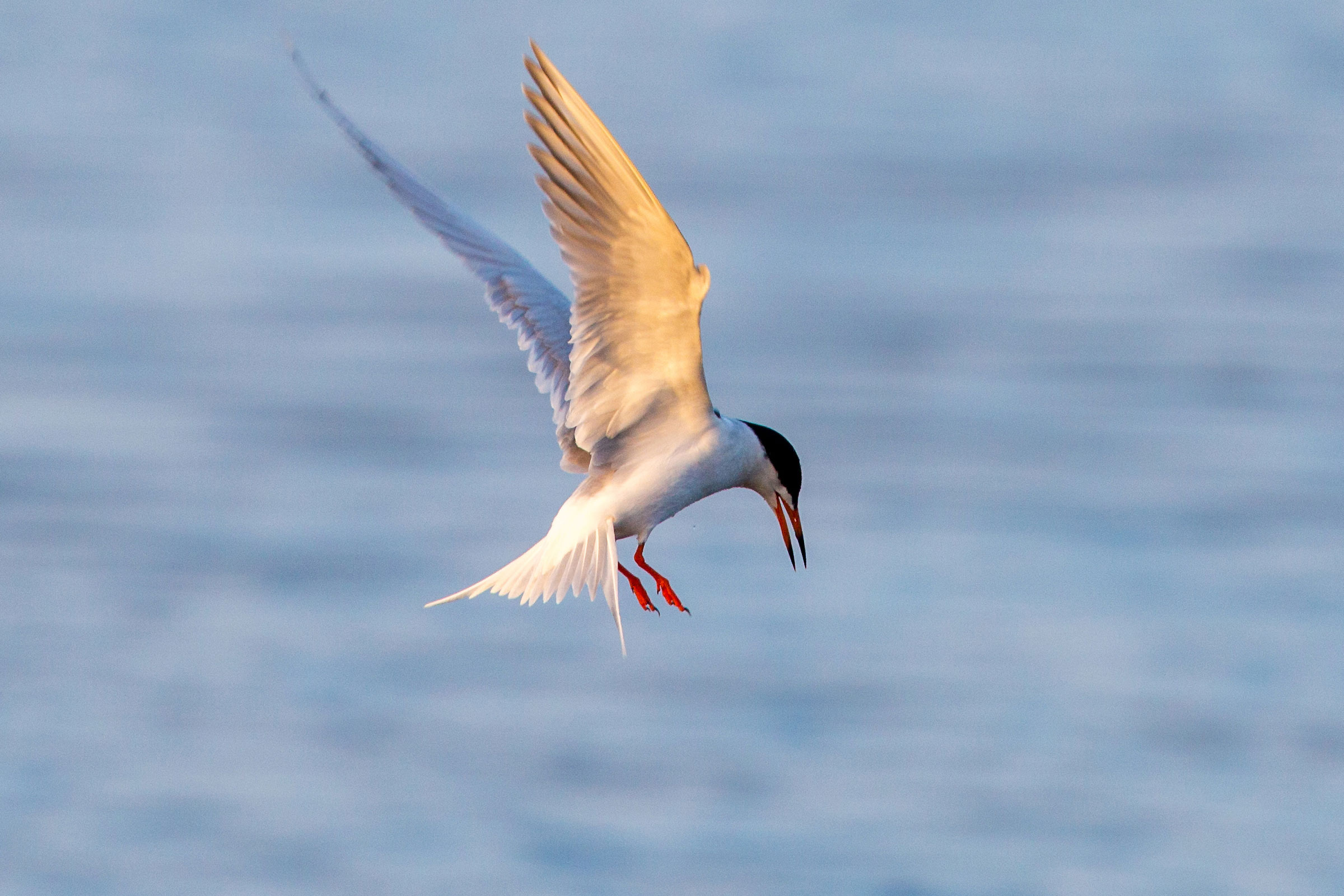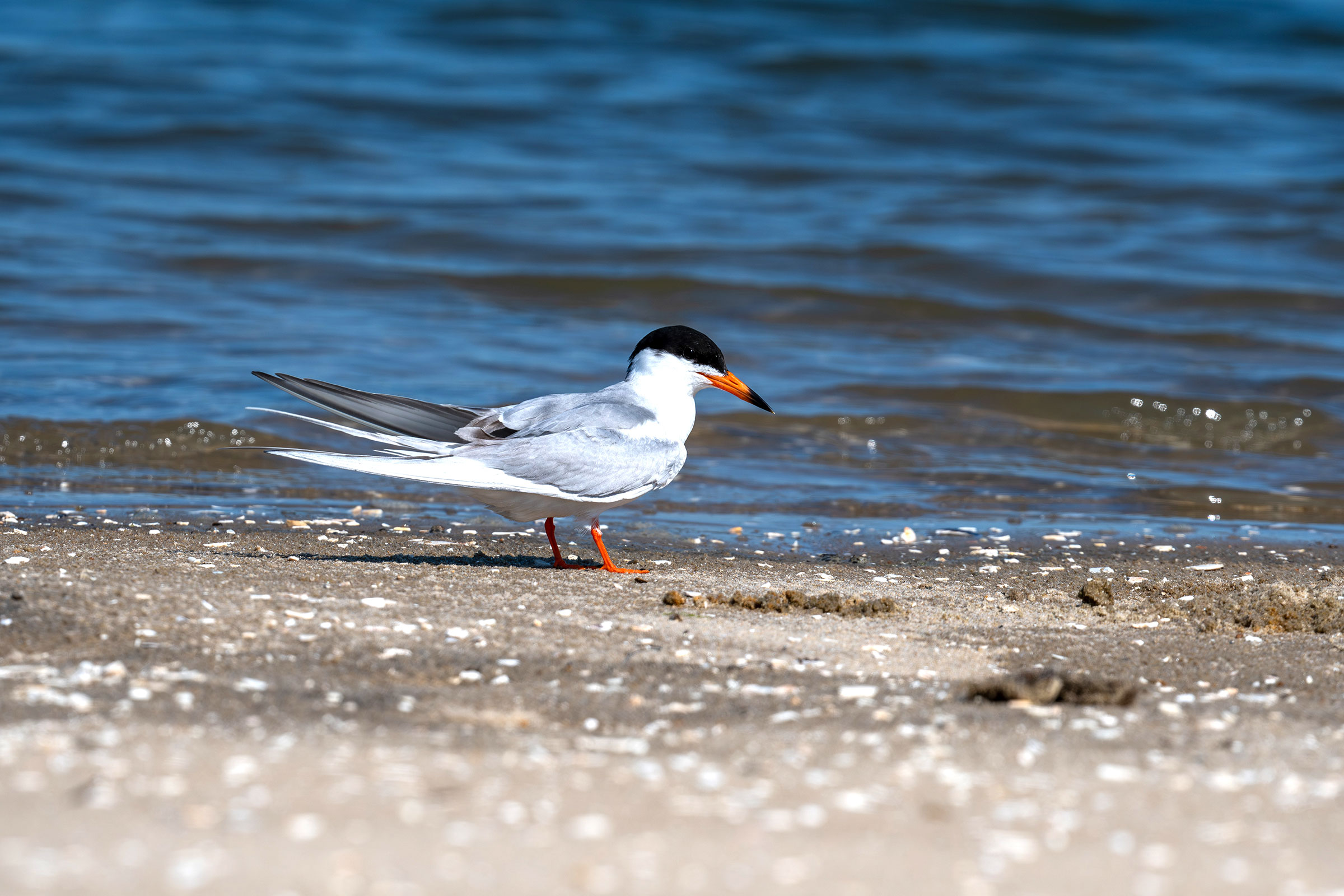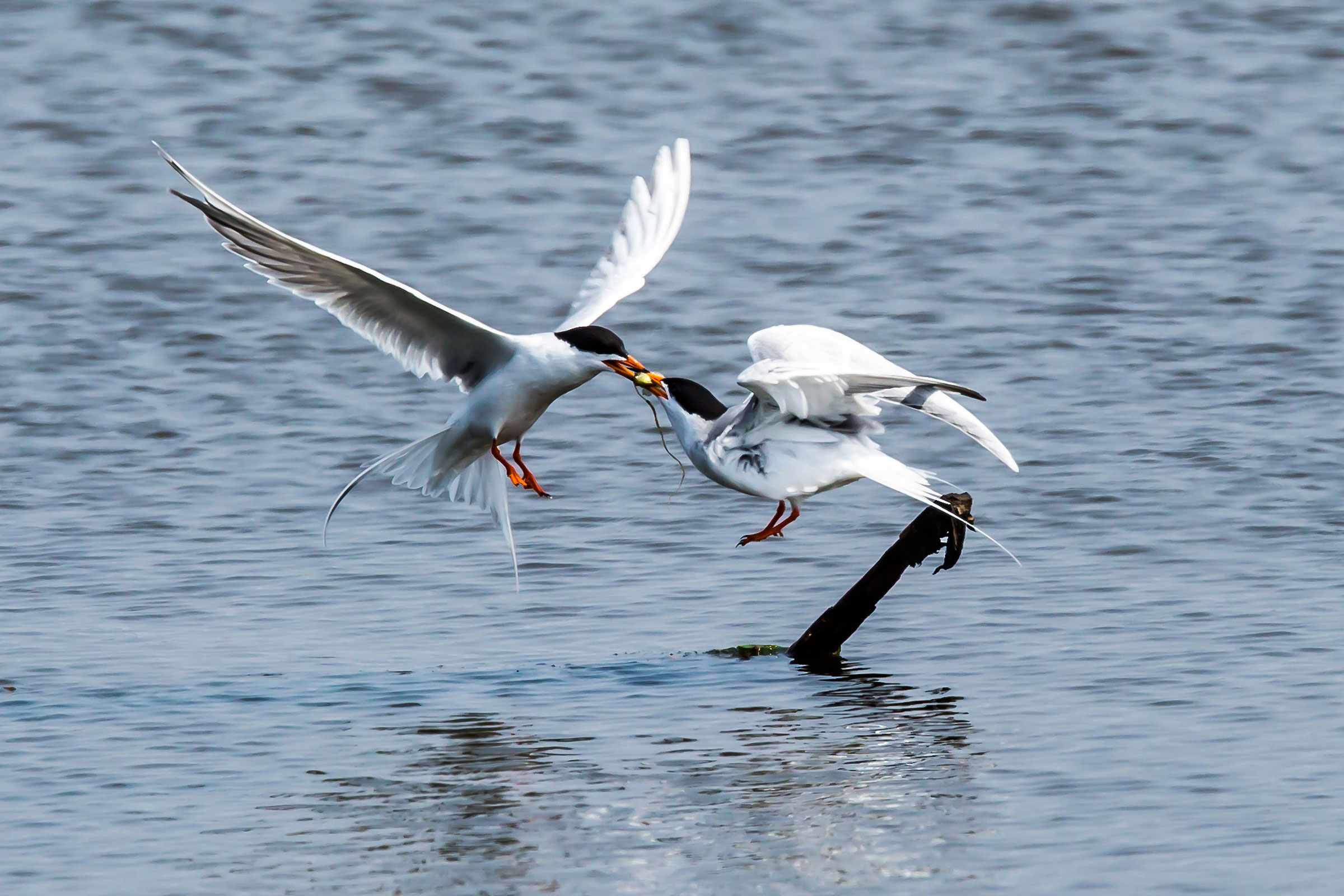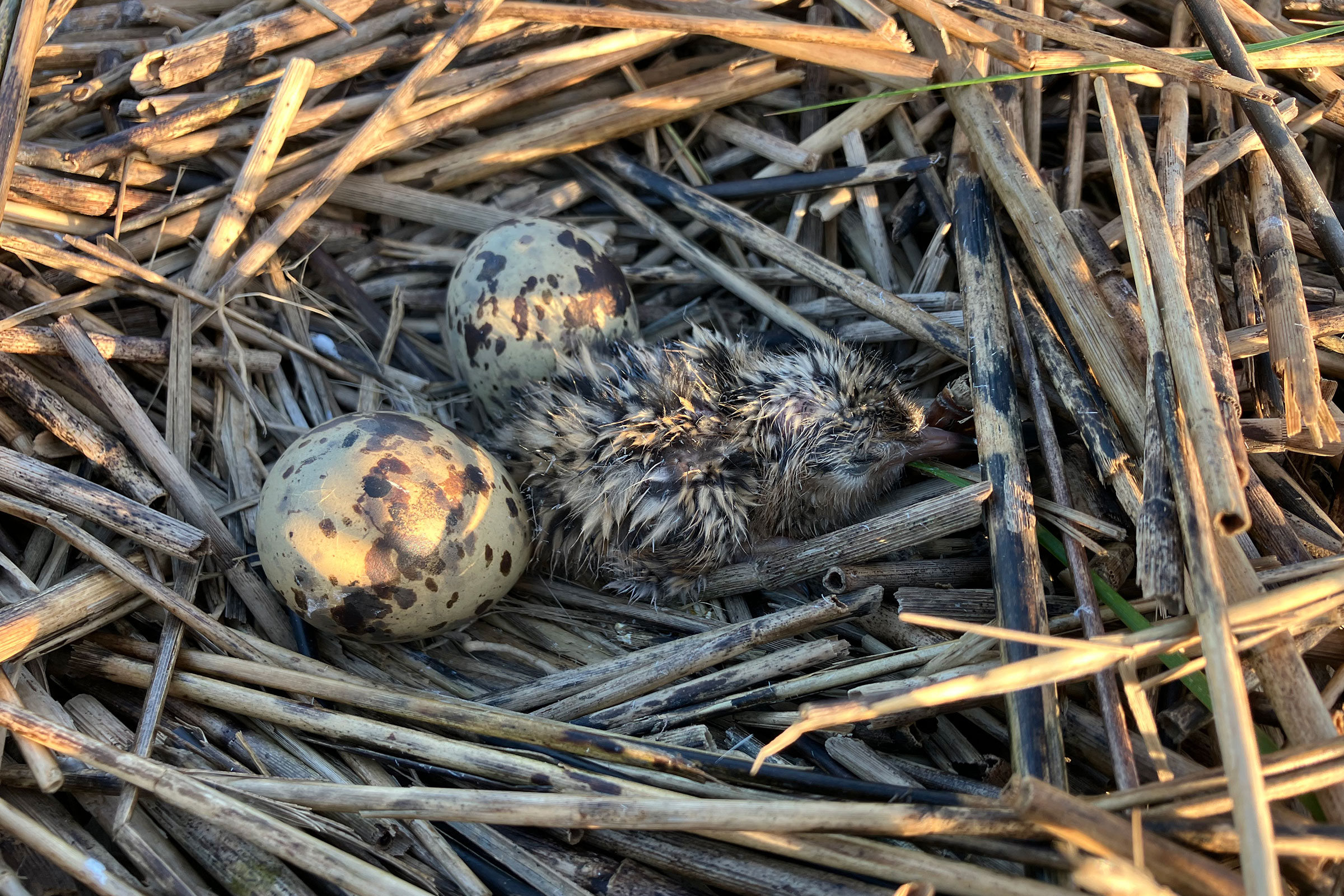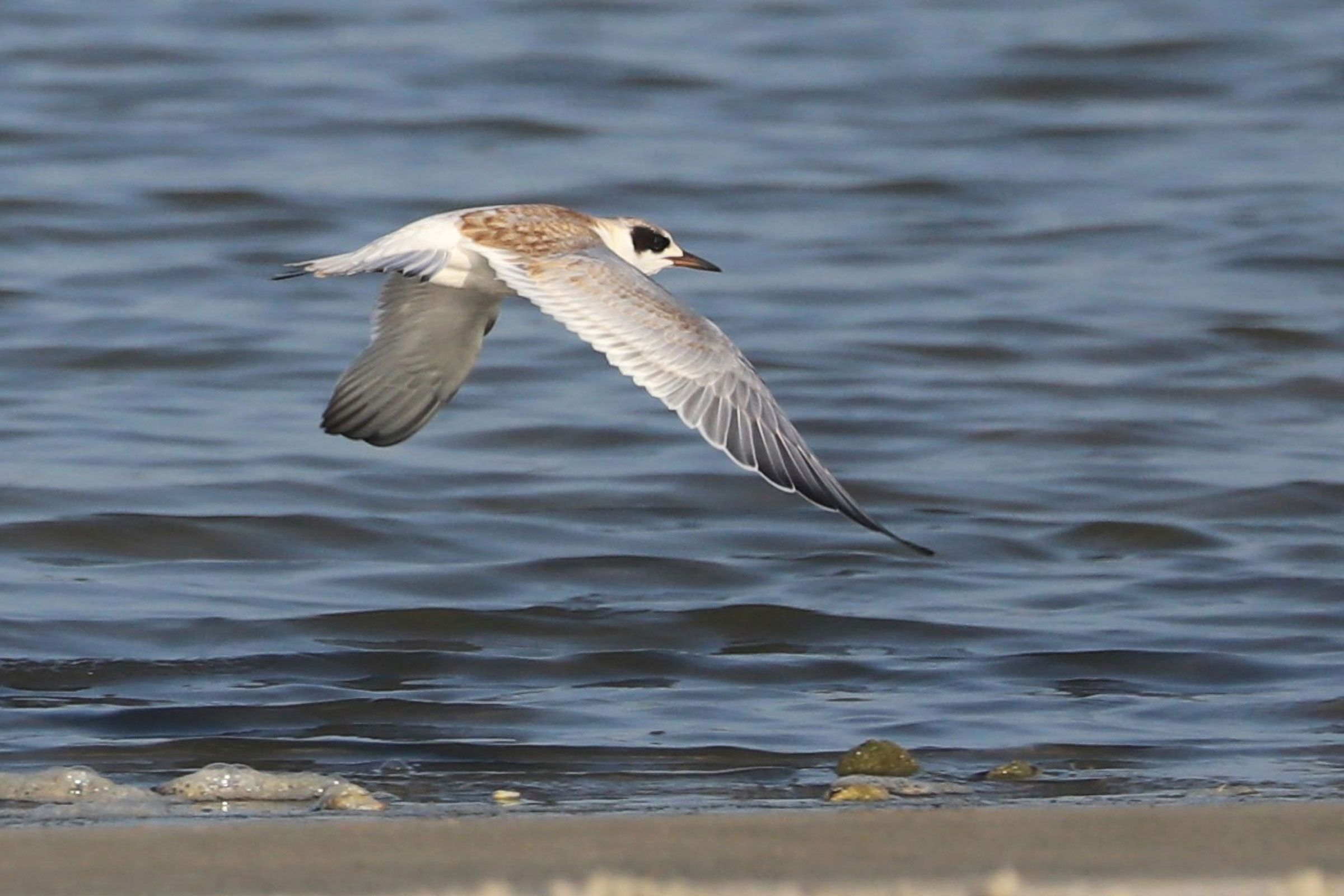Introduction
With a forked tail slicing through the air, a Forster’s Tern hovers momentarily before plunging into the marsh to seize its prey. This tern is easier to identify in winter when it sports a black ear patch, while in breeding plumage, it closely resembles the Common Tern (Sterna hirundo). In fact, Forster’s Terns were not described as a separate species until the 1830s (McNicholl et al. 2020). In Virginia, Common Terns only occur in saltwater and estuarine habitats, whereas Forster’s Terns inhabit both inland salt and freshwater marshes along the Atlantic and Chesapeake Bay, where they forage by hovering and diving for small fish.
In Virginia, Forster’s Terns nest primarily on cordgrass (Spartina spp.) wrack that accumulates in hard-to-reach tidal marshes (Williams et al. 1990), and because this habitat shifts from year to year, their colony locations are highly variable, making them more challenging to survey than other terns. The species is a common year-round resident, occasionally wandering up tidal rivers (Rottenborn and Brinkley 2007).
Like many of Virginia’s other terns, Forster’s Terns were hunted to very low numbers by the turn of the 20th century for the millinery trade and greatly benefited from legal protection. Sea-level rise and other emerging threats to coastal marshes once again jeopardize their future in the state.
Breeding Distribution
The Forster’s Tern was well-covered during the Second Atlas by the 2018 Virginia Colonial Waterbird Survey, a coastal census conducted by the Center for Conservation Biology in collaboration with the Virginia Department of Wildlife Resources and The Nature Conservancy. The survey identifies nesting locations of this and other species that breed in colonies. Because the Forster’s Tern only breeds within the survey area, there was no need to model its distribution. For information on where the species occurs in Virginia’s Coastal Plain, please see the Breeding Evidence section.
Breeding Evidence
Given the breeding biology of the species, the Forster’s Tern is unlikely to have nested in blocks without confirmed breeding evidence (see Interpreting Species Accounts). Confirmation of breeding was based on records generated by the Virginia Colonial Waterbird Survey in 2018. Additional breeding confirmations were reported by Atlas volunteers in other years of the Second Atlas period.
Forster’s Terns were confirmed on Atlantic and Chesapeake Bay marshes, from Fisherman Island in the south to the marshes off the Chincoteague causeway in the north (Figure 1). Breeding was confirmed in 22 blocks in two counties (Accomack and Northampton). The distributions of breeding sites during both Atlas periods were largely similar, except the species was confirmed on the Western Shore of the Chesapeake during the First Atlas but not during the Second Atlas (Figure 2). Marsh nesting locations can be highly variable from year to year.
Forster’s Terns were observed on nests from May 10 to July 4 (Figure 3). Nests had eggs from June 1 to June 24, and young from June 1 to July 14. Parents feeding young was observed through late July. The relatively low number of breeding observations can be attributed to their mostly inaccessible breeding habitat on salt marshes. For more general information on the breeding habits of the Forster’s Tern, please refer to All About Birds.

Figure 1: Forster’s Tern breeding observations from the Second Atlas (2016–2020). The colored boxes illustrate Atlas blocks (approximately 10 mi2 [26 km2] survey units) where the species was detected. The colors show the highest breeding category recorded in a block. The numbers within the colors in the legend correspond to the number of blocks with that breeding evidence category. Nesting is unlikely outside of confirmed blocks.
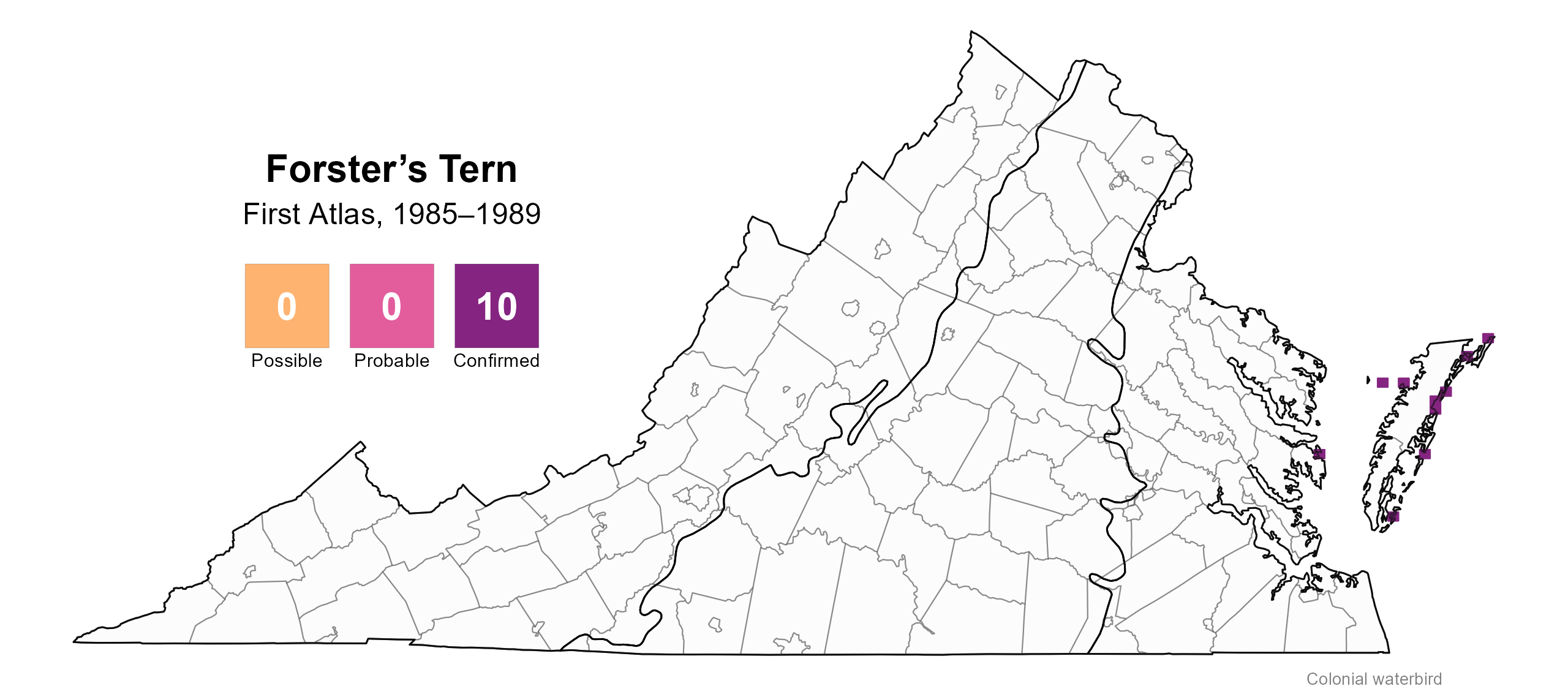
Figure 2: Forster’s Tern breeding observations from the First Atlas (1985–1989). The colored boxes illustrate Atlas blocks (approximately 10 mi2 [26 km2] survey units) where the species was detected. The colors show the highest breeding category recorded in a block. The numbers within the colors in the legend correspond to the number of blocks with that breeding evidence category.
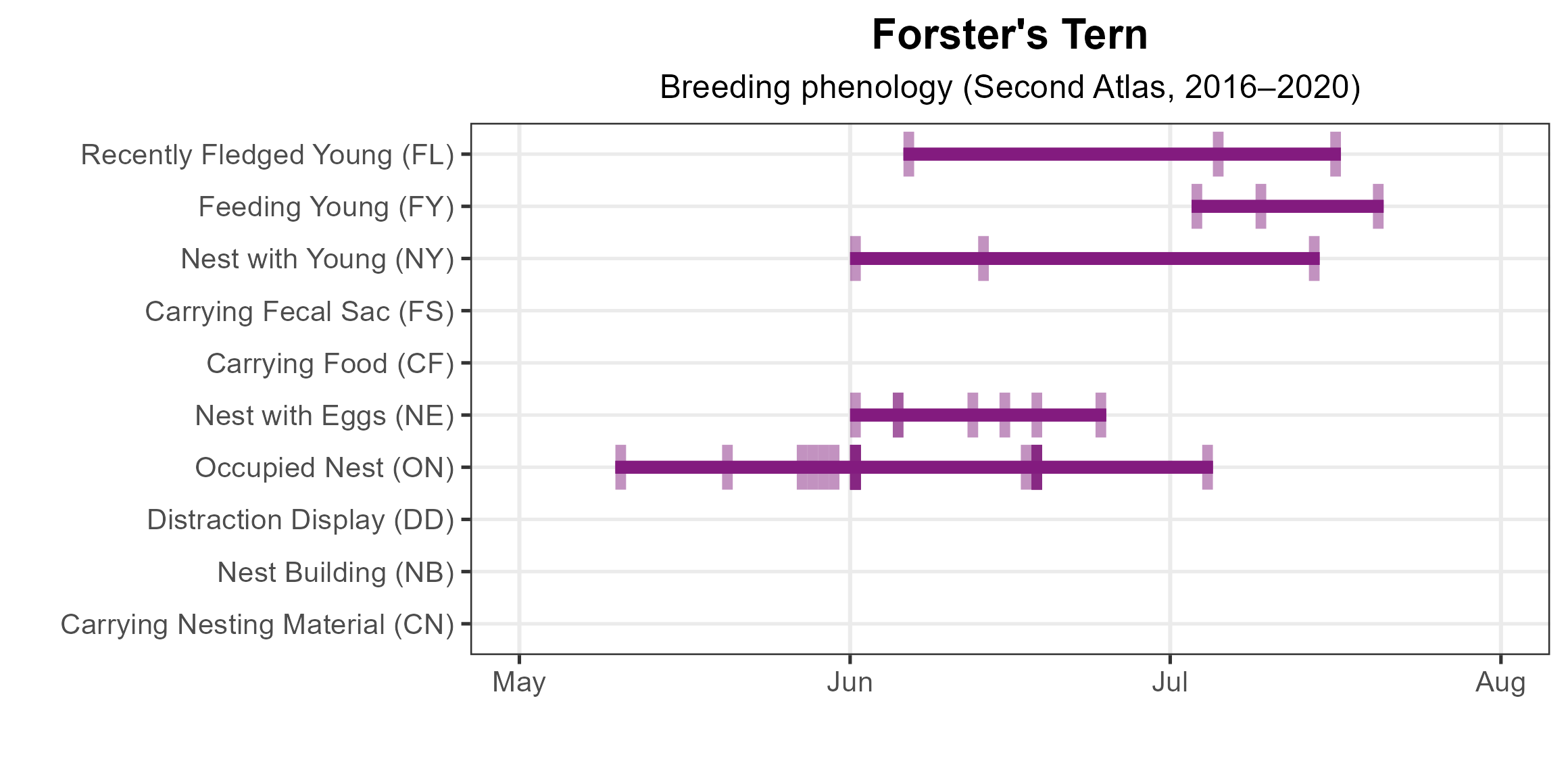
Figure 3: Forster’s Tern phenology: confirmed breeding codes. This graph shows a timeline of confirmed breeding behaviors. Tick marks represent individual observations of the behavior.
Population Status
The Forster’s Tern had too few detections during the Atlas point count surveys to develop an abundance model. However, the distribution and size of Forster’s Tern colonies derived from the 2018 Virginia Colonial Waterbird Survey are displayed on the CCB Mapping Portal.
The Virginia Colonial Waterbird Surveys recorded instability in the number of breeding pairs, which rose from 2,939 in 1993 to a high of 3,065 in 2008, before falling to 1,099 in 2023 (Watts et al. 2019; Watts et al. 2014; Figure 4).

Figure 4: Forster’s Tern population trend for Virginia’s Coastal Plain. This chart illustrates the number of breeding pairs as estimated by the Virginia Colonial Waterbird Survey (Watts et al. 2024). A data point is not included for 1998, as the Survey covered a smaller geographic area in that year. The vertical light blue bars represent the periods corresponding to the First Atlas (1985–1989) and Second Atlas (2016–2020).
Conservation
Forster’s Tern is classified as a Tier II Species of Greatest Conservation Need (Very High Conservation Need) in Virginia’s 2025 Wildlife Action Plan due to its vulnerability to sea-level rise and marsh subsidence (VDWR 2025). Like the Laughing Gull (Leucophaeus atricilla), which also nests in low-lying coastal marshes, Forster’s Tern faces increasing threats from rising sea levels. Their nests, made of washed-up marsh vegetation and constructed in low marsh habitats, are easily flooded. Unlike beach-nesting terns, these terns experience minimal human disturbance, which allows them to acclimatize to low levels of disturbance produced by commercial and recreational fishing activities (McNicholl et al. 2020). Conservation efforts should include identifying and protecting marsh migration zones and high marsh habitats that could serve as future nesting habitat. Artificial nest platforms in marshes may also provide an alternative nesting option.
Interactive Map
The interactive map contains up to six Atlas layers (probability of occurrence for the First and Second Atlases, change in probability of occurrence between Atlases, breeding evidence for the First and Second Atlases, and abundance for the Second Atlas) that can be viewed one at a time. To view an Atlas map layer, mouse over the layer box in the upper left. County lines and physiographic regional boundaries (Mountains and Valleys, Piedmont, and Coastal Plain) can be turned on and off by checking or unchecking the box below the layer box. Within the map window, users can hover on a block to see its value for each layer and pan and zoom to see roads, towns, and other features of interest that are visible beneath a selected layer.
View Interactive Map in Full Screen
References
McNicholl, M. K., P. E. Lowther, and J. A. Hall (2020). Forster’s Tern (Sterna forsteri), version 1.0. In Birds of the World (A. F. Poole and F. B. Gill, Editors). Cornell Lab of Ornithology, Ithaca, NY, USA. https://doi.org/10.2173/bow.forter.01.
Rottenborn, S. C., and E. S. Brinkley (Editors) (2007). Virginia’s birdlife: An annotated checklist. 4th edition. Virginia Society of Ornithology.
Virginia Department of Wildlife Resources (VDWR) (2025). Virginia wildlife action plan. Virginia Department of Wildlife Resources, Henrico, VA, USA. 506 pp.
Watts, B. D., B. J. Paxton, R. Boettcher, and A. L. Wilke (2019). Status and distribution of colonial waterbirds in coastal Virginia: 2018 breeding season. CCBTR-19-06. College of William and Mary and Virginia Commonwealth University, Williamsburg, VA, USA.
Watts, B. D., B. J. Paxton, R. Boettcher, and A. L. Wilke (2024). Status and distribution of colonial waterbirds in coastal Virginia: 2023 breeding season. CCBTR-24-12. College of William and Mary and Virginia Commonwealth University, Williamsburg, VA, USA.
Williams, B., R. A. Beck, B. Akers, and J. W. Via (1990). Longitudinal surveys of the beach nesting and colonial waterbirds of the Virginia barrier islands. Virginia Journal of Science 41:381–388.

